Collecting and planting garlic seeds
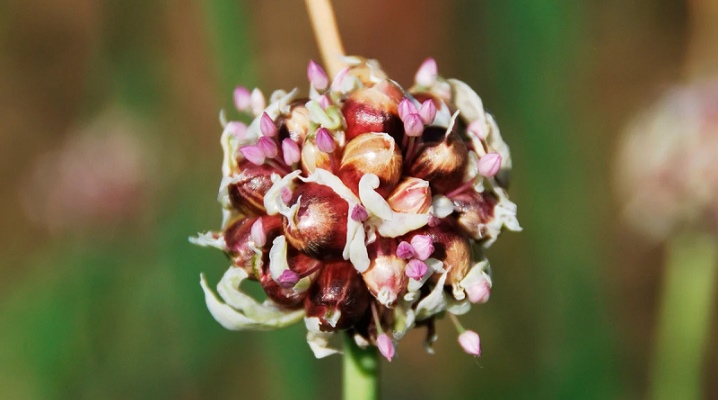
Garlic is a very common plant that is found in almost every vegetable garden or garden plot. Garlic is grown in different ways, one of the most popular is growing from the so-called bulbs.
Landing of this type has its own characteristics, while there is nothing complicated in the procedure. The main thing is to take into account all the nuances, to study the rules and basic mistakes when growing garlic in this way.
What it is?
It is easier to breed winter garlic than spring garlic. For the method of growing from bulbs, it is winter garlic that is used. In the process of growth, arrows are formed on it, which, developing, then open like a flower. The large petals on the arrow, which are formed, are the bulbs, that is, the seeds of garlic. They look like very small cloves, the number on each stem can include about a hundred pieces. Bulb-"air" visually resembles a seed, it is she who is used in the seed method of reproduction and planting of garlic. Three opened arrows are enough to get about one and a half hundred teeth for planting.
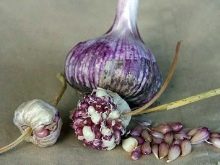
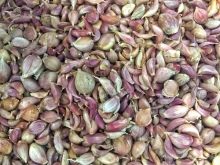

The seed growing method has its advantages and disadvantages. Among the advantages are the following:
- air teeth are not affected in any way by pests or diseases contained in the soil;
- you can very quickly dilute a rather rare variety, since there are a lot of "air" cloves formed, in comparison with a head of garlic;
- the garlic grown in this way has a stronger immune system and is good at resisting diseases.
But there are also disadvantages, the main of which is the harvest time. You will harvest the full amount of fruits two years after planting, that is, in the second season. During the first period, the collection of one-tooth is carried out - bulbs from one clove, the diameter of which varies from 1 to 2.5 mm. And only by planting a single-tooth, you can count on getting a full harvest of garlic heads. In addition, gardeners believe that sowing bulbs is more difficult than cloves, since the size of the "air" is extremely small. It is problematic to place them, observing the necessary landing pattern. There is also a risk that the seeds will freeze over in winter if sufficient cover is not taken care of. Thus, this method can be considered appropriate for the cultivation of rare varieties or when the seed requires renewal.
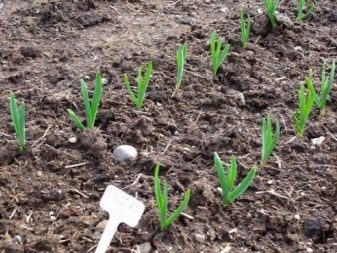
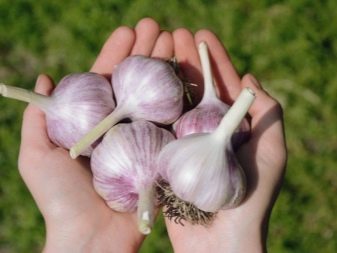
Collection features
Since the time period for the ripening of a plant depends entirely on climatic conditions, when you need to collect seeds is determined individually in each region. Optimally focus on the appearance of the arrow:
- at first it twists in a spiral manner;
- then it becomes straight, it's time to take the seed.
To get a rich high-quality crop, it is necessary to remove "air" on the overall stems. They are left for further disembarkation, others can be disposed of. Selected arrows should be fully ripe without missing harvest time. The bulbs fall off rather quickly after ripening and become unsuitable for reproduction.
The average number of seeds in an inflorescence may differ, the normal number is considered to be from 20 to 130 pieces.
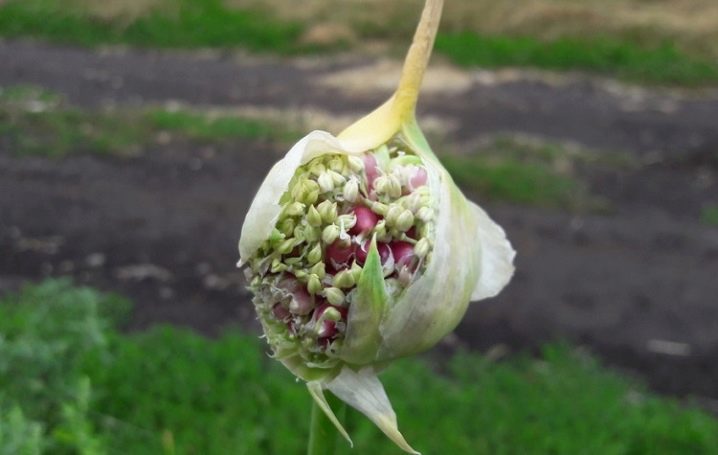
Sowing preparation
Timing
The planting period is also an important point, garlic is planted both in spring and autumn, before winter. Spring disembarkation occurs in the same way as autumn, but there are differences:
- the optimal planting time is early March, but often the ground has not yet warmed up and is too hard;
- after shoots appear, it is necessary to organize competent care - to feed, water, protect from pests, diseases;
- in order to better prepare the soil, the procedure begins in the fall, the beds are formed, mulched and covered with polyethylene.
Since garlic tolerates cold well, the frozen soil in early spring will not kill the plant. The soil at this time is qualitatively moistened, which means that the seeds will take root much better, and the harvest will be plentiful.
Autumn planting is used more often, the optimal period is the first half of November, but the peculiarity of the climate of the region is also taken into account. For example, if November is the time of precipitation in your area, it is better to plant garlic earlier. The air temperature can serve as a reference point, the level of which should not fall below +5 C.

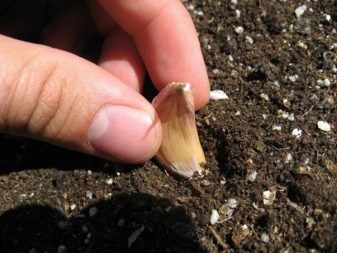
Tools and planting material
Despite the fact that the process of planting garlic with the help of bulbs is carried out in almost the same way as other vegetables, there are ways to simplify the process itself and the mechanism. For example, you can prepare a planter designed for onions. It is great for measuring the distance between landings. On an industrial scale, special machines are used for planting, which allow you to cover large areas in a short time.
Before sowing the bulbs, you need to competently prepare them for planting. After collection, the material is not separated, storage is carried out as a whole. They need to be kept wrapped with gauze, which is pre-soaked with a manganese solution and dried well. The material is suspended in gauze while it is ripening. During this period, all the necessary nutrients from the arrow go into the cloves. And only when the stem dries up can the seeds be removed and detached from each other.
After that, you can either store it further or plant it right away. For sowing, cloves from 4 to 5 mm wide are suitable, it is from these that an excellent large single-tooth clove will grow. Do not forget that you need to carefully calibrate the seeds, get rid of everything unhealthy. The prongs are stored in a cool place, basement, cellar, refrigerator, the optimum temperature is from +2 to +5 C. Such hardening will strengthen the immunity of the material.
Before planting the bulbs in the spring, it is better to soak them in water for a couple of hours to speed up the germination process. Autumn planting is done dry.
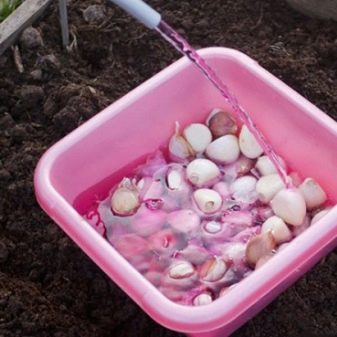
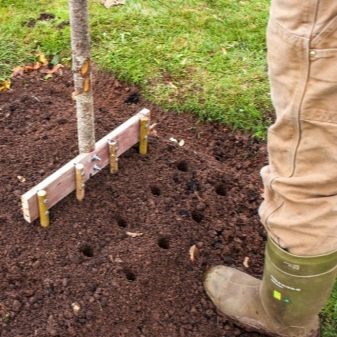
Seat selection
To grow a decent crop from bulbs, you need to take care of the condition of the soil and choosing a good place. Before planting, it is necessary to process the soil, level the area. As for the choice of the site, you need to be guided by the same principles as for other methods of growing garlic:
- the plot is chosen flat, with excellent access to sunlight, not shady;
- the soil should not be littered with grass;
- the soil is preferable loose, fertile type;
- since the varieties are updated with this type of reproduction, it is necessary to take care of the health of the soil;
- you can safely plant bulbs in places where legumes, tomatoes, any types of cabbage, siderates, pumpkin were previously grown;
- keep in mind that after growing garlic, onions, this zone cannot be used for planting cloves for at least 3 seasons;
- the soil is dug up before the procedure, fertilized.
For one square meter, you need to add:
- 4-6 kg of compost, maybe a little more or less;
- ash or bone meal - 300 gr.
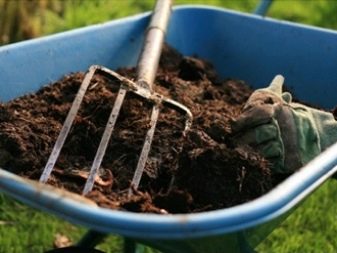
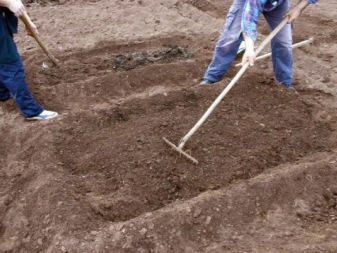
How to plant correctly?
Planting garlic with bulbs has its own characteristics, the biggest plus of this method is the improvement of the material, the improvement of varietal qualities and seed savings, an increase in the storage period of the crop. You can plant garlic in this way both in a small garden bed and on a huge area on an industrial scale. Differences will only be in technical means (manual seeders or machines) and time costs.The seasonality that the gardener chooses also does not affect the planting process. Step by step, this procedure is as follows:
- first, the material is sorted by size, and several groups are formed, at least three;
- the average number per square meter is from 30 to 40 smallest bulbs;
- if the size is larger, then the amount of area increases;
- the optimal sowing depth differs in planting time - in the spring it is about 3.5 cm, in the autumn - about 10 cm;
- the length of the beds can be any without restrictions;
- seed material is sent to the holes, which is covered with a layer of humus, then it needs to be at rest.
As mentioned above, the crop is harvested only in the second season after sowing, but there are exceptional cases when the fruits ripen the next year. For two years in a row, it is strictly forbidden to grow garlic in one zone, since pathogenic microbes and fungus accumulate there.
The soil after cucumbers, carrots, onions is not suitable for cultivation either.
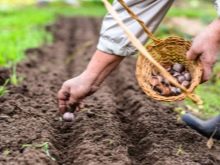


Care
To grow a decent crop from the bulbs, the plants need to be properly looked after. Not only open field cultivation is allowed, but also at home. There are a number of agronomic procedures that are necessary for the formation of a good harvest.
- Moisturizing. Seedlings of the plant are quite sensitive and demanding of moisture. Therefore, it is recommended to loosen the soil between the rows regularly, as well as destroy weeds. If there is no rain, you need to moisten the soil at least once a week, and it is better to increase the number of waterings to two.
- Mulching. Planting spacings can be mulched using bark or small straw. This makes it possible to keep water in the soil longer, and also saves plants, or rather their root system, from overheating in the open sun. Mulching is carried out after the seedlings have stretched at least 10 cm.It is optimal to form a layer 5 cm thick.
- Formation. In the summer, arrows can form on the shoots, you need to track this and break the formations before the process of seed ovary. If the bulbs have time to form, then the development of the garlic will be slowed down, and the one-tooth will eventually turn out to be very small in size.
- Fertilizer. A plant planted with bulbs requires feeding, on average, it is 2 or 3 procedures per vegetation period. First, fertilization with nitrogen-containing substances is required, seedlings are fertilized to increase the growth of greenery. You can use either 10 g of urea per 5 liters of water, or 50 g of poultry manure solution per 1.5 liters of water. The feeding method is watering between the rows so that the seedlings are not affected by substances. In July, you need to fertilize with compounds with potassium and phosphorus. To do this, dilute potassium sulfate (15 grams per 10 liters) and superphosphate (30 grams for the same amount of water). Ash infusion in a proportion of 200 grams per bucket can replace mineral fertilizing. You can also infuse banana skins and water the soil. The last stage of fertilization is carried out at the very end of summer, when the soil is fed with various compounds. Both potassium sulfate and potassium nitrate are suitable. Experts recommend trying this method: when sowing, add complex fertilizer in granules to the grooves. Special formulations with a prolonged principle of action are on sale. In this case, you do not need to fertilize the garlic at all during the entire growing season.
- Protection from disease. This method of growing garlic provides it with a good level of immunity, accordingly, diseases and pest attacks are rare. But sometimes, in a long damp period, it is necessary to spray the plants with a Bordeaux mixture in order to prevent the appearance of a fungus.
- Harvesting and storage of one-toothed. Excavation of one-toothed teeth is carried out when the arrows begin to turn yellow. In this case, do not wait until the foliage is completely dry.If the stems are brought to the state of dust, but the root will go very deep into the soil and it will be difficult to dig it out. it is better to harvest an unripe crop and dry it in a place where it is dry and cool. One-teeth need to be tied up, hung on a blown area, while the temperature should not be lower than +17 C. After about a month, the plants ripen and the tops can be removed. One-tooth are stored in the basement, cellar, refrigerator, and the next season they are planted to obtain a full-fledged harvest.
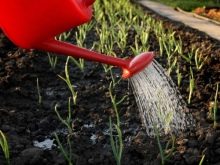

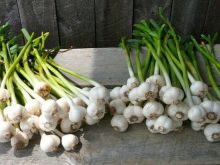













The comment was sent successfully.